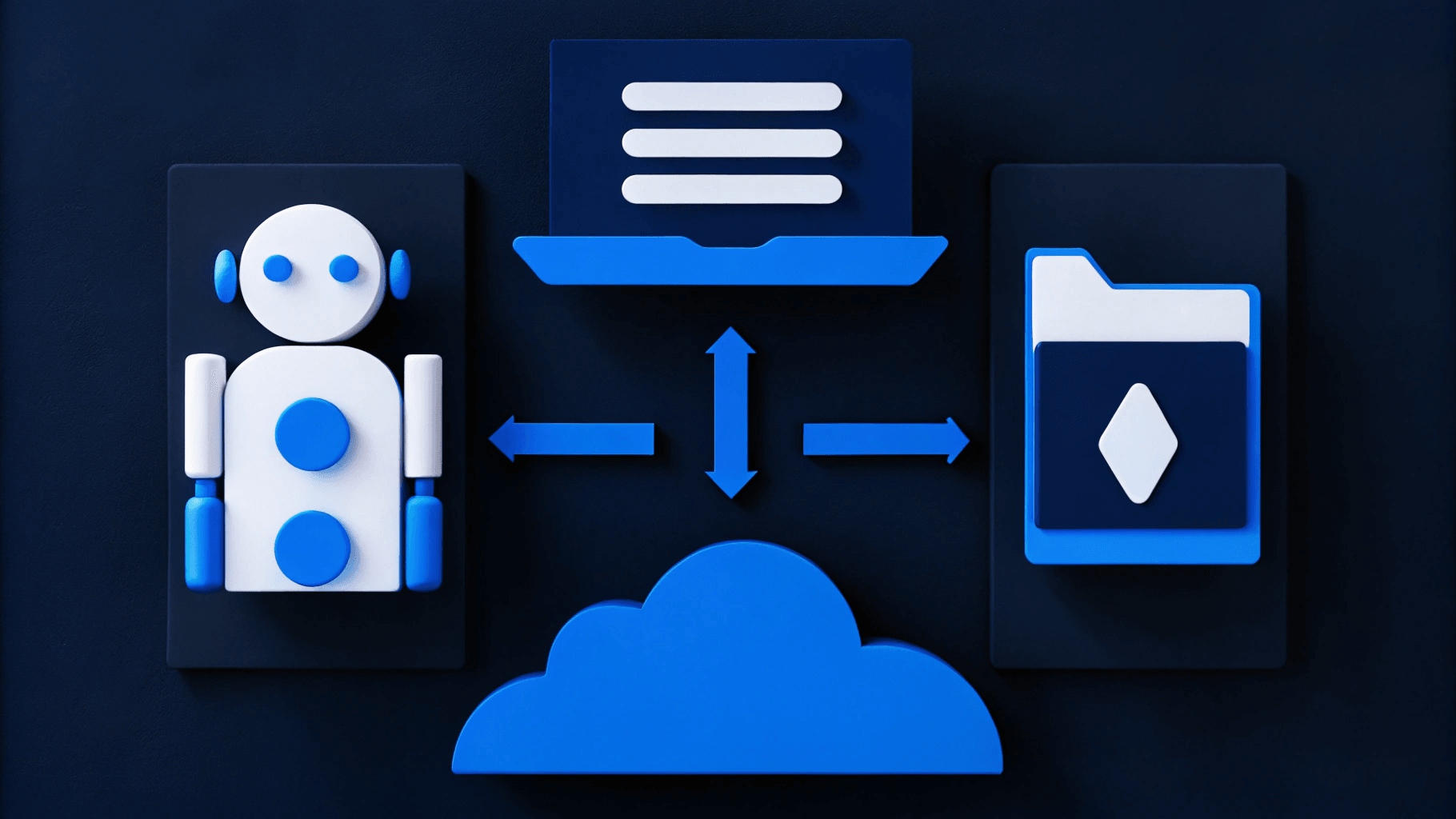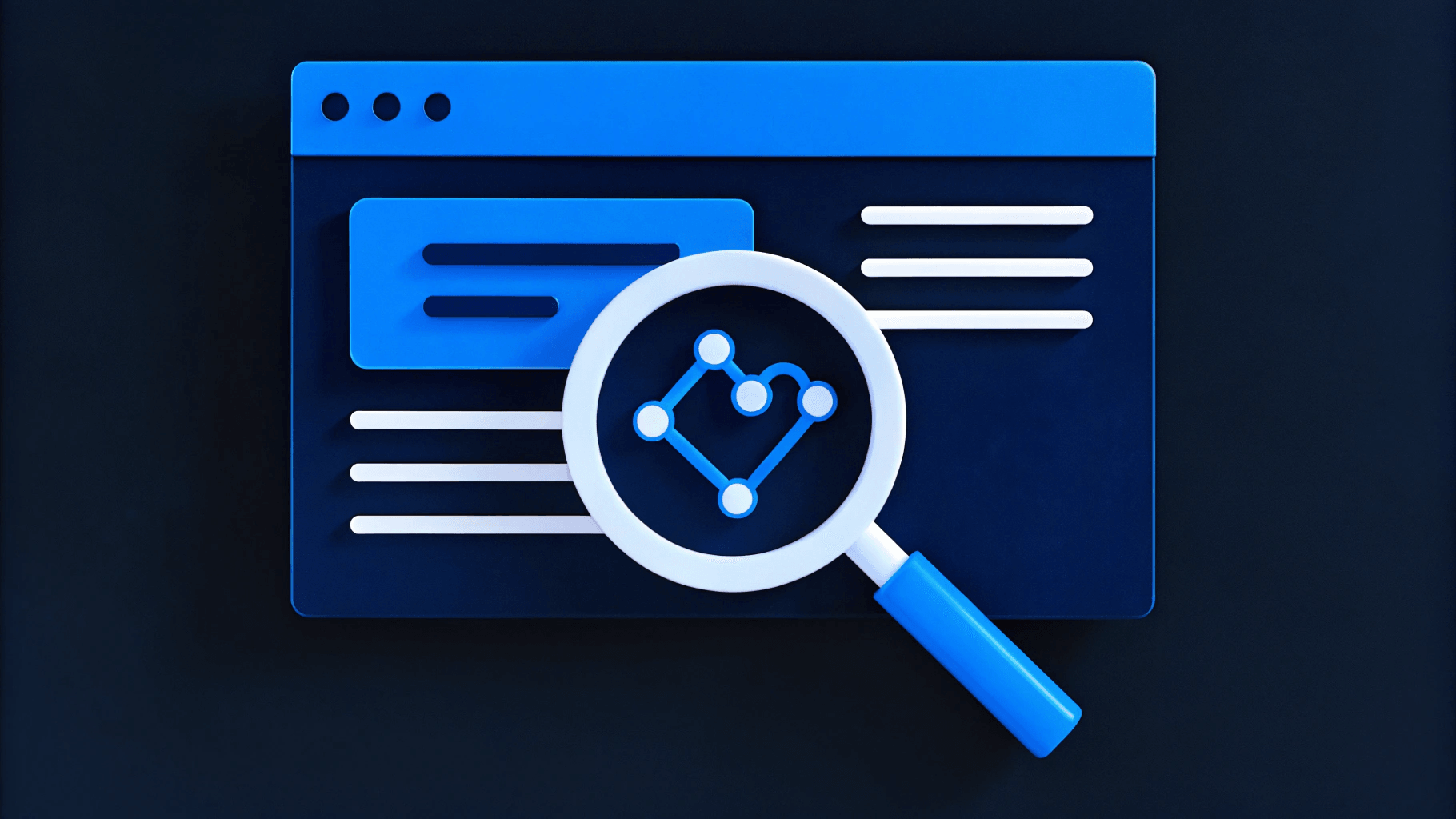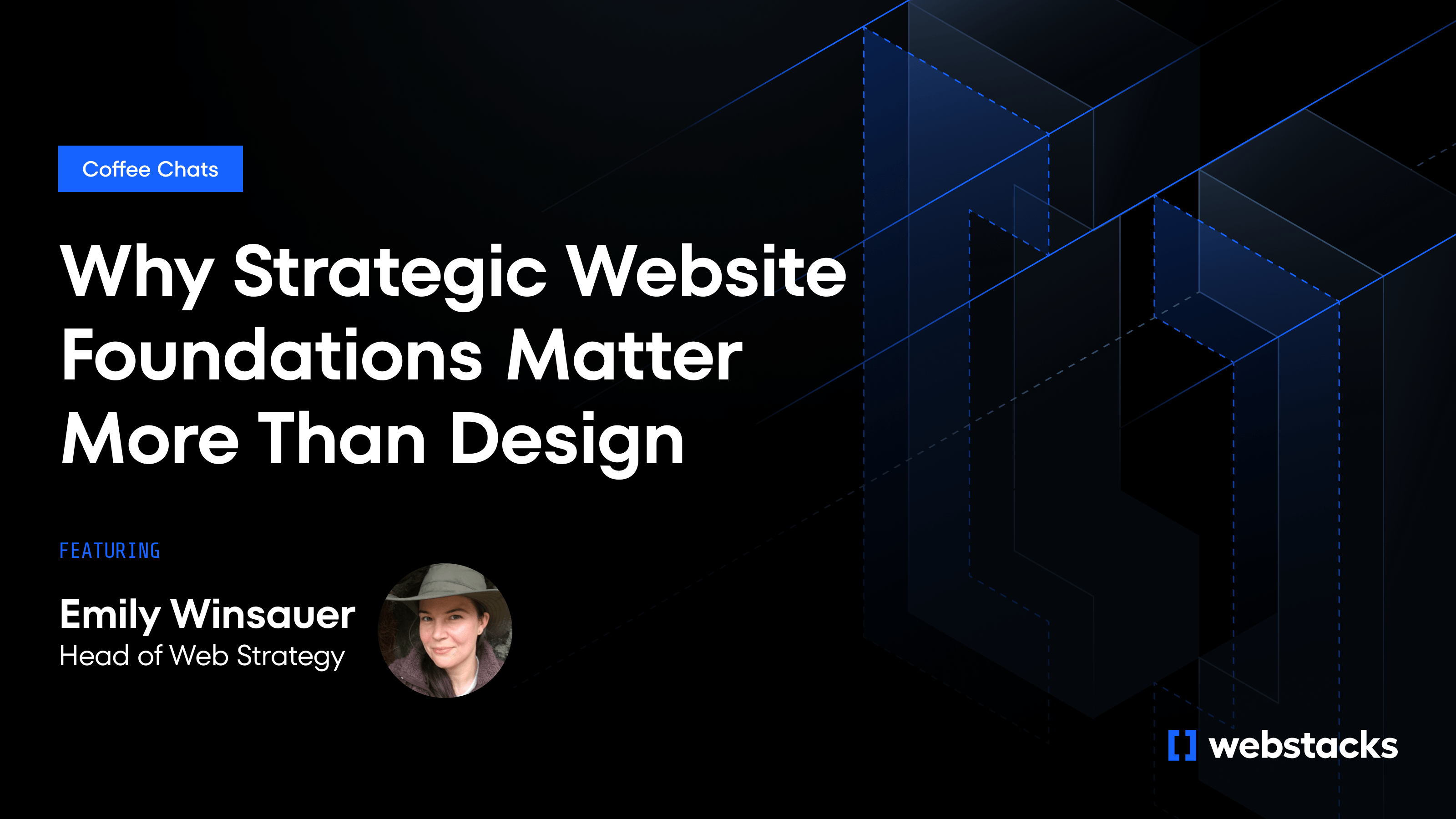Visual editors promise fast page launches and AI-assisted creativity, but the speed rarely lasts. Most tools can get you part of the way to production, then stall. The final stretch requires manual fixes, design reviews, and copy rewrites that erase any early time savings.
Templates compound the problem. Layouts start to look interchangeable, eroding brand differentiation and reducing the impact of campaigns. Subtle cues like icon styles, color weights, and microcopy tone drift over time, forcing teams into constant policing of off-brand elements.
These challenges point to a bigger issue: drag-and-drop builders were never built for data-driven AI workflows or enterprise governance. Marketing velocity slows, developers patch around tool limits, and every campaign demands more effort than expected.
The alternative is a component-based, API-first foundation where content is structured, reusable, and versioned. This creates an environment where both humans and AI can deliver at scale.

Why Visual Editors Slow AI-Enabled Teams
At first glance, visual editors seem like the fastest path to shipping. In the early days, assembling pages from prebuilt blocks feels efficient, and AI-assisted layouts promise even more speed. The reality changes once campaigns scale. Rigid templates, shallow integrations, and mounting review cycles start to outweigh the early gains, leaving teams with more cleanup work and less creative flexibility than they expected.
Creative and Brand Limitations
Layouts quickly become repetitive, reducing campaign impact and leading to performance plateaus. Brand drift increases as reused templates dilute distinctive elements. Small inconsistencies in fonts, spacing, and color tokens multiply across pages. Multimedia assets from AI tools still require frame-by-frame checks to meet brand standards, adding hours of manual review.
Technical Gaps for AI Workflows
Most visual editors expose limited or shallow APIs, trapping data behind proprietary interfaces. Without predictable schemas and full CRUD access, AI models are forced to parse messy HTML instead of clean JSON, slowing performance and increasing errors. Bulk operations hit rate limits, and personalization tests break when templates change. These gaps create latency, force error-prone workarounds, and block reliable automation.
Collaboration and Version Control Issues
Page-level snapshots replace granular component diffs, preventing targeted rollbacks and making it harder to track AI-generated changes across locales. Opaque interfaces keep developers, designers, and marketers from working in shared version control or structured review processes. Without a common source of truth, AI helpers lack full project context, reducing their effectiveness.
The result is a fragile workflow where brand consistency erodes, optimization stalls, and human expertise never fully integrates with machine efficiency. For teams aiming to scale with AI, visual editors create more maintenance, rework, and missed opportunities than momentum.
The Hidden Costs for Marketing Teams
The limitations of visual editors are not limited to slower workflows or rigid templates. Over time, they create systemic problems that compound across campaigns and quarters. What starts as a minor inconvenience, such as a slightly off-color or a generic template, becomes a persistent drag on brand equity, team productivity, and marketing budgets.
These hidden costs often surface only after teams have been using the tools for months, making them harder to unwind:
- Brand drift: Generic color palettes and typography embedded in templates slowly dilute identity. One off-brand CTA can spread across dozens of pages before anyone catches it, making every asset feel interchangeable with a competitor’s.
- Longer turnaround times: AI suggestions still require human review for tone, layout, and accessibility. Bulk edits are often throttled, so fixing mismatched headers or CTAs means opening pages one by one.
- Content debt: One-off layouts without shared data models make it risky for AI to swap copy or images. Pages become difficult to localize, personalize, or test, leading to an archive that is costly to maintain and impossible to audit.
- Operational silos: Builders optimize for individual speed, not shared workflows. Designers, writers, and developers work in separate dashboards with no common source of truth. Without versioning or permissions, AI agents also struggle to operate within governance rules.
- Security and ownership risks: AI-generated assets raise legal questions, and cloud-based editors can expose proprietary style guides or campaign data to third-party servers without granular controls.
For marketing leaders balancing brand, demand generation, and developer alignment, these costs appear as slower launches, inconsistent visuals, and rising clean-up budgets. The damage is incremental, but quarter after quarter, it becomes impossible to ignore.

Component-Based Systems: Built for Scale and AI
The limitations of visual editors make it clear that AI-enabled teams need a different foundation. Component-based, API-first systems solve these issues by giving every piece of content, design, and logic a defined, reusable structure that can be updated and deployed programmatically.
Instead of hardcoding elements into pages or relying on brittle templates, teams work with reusable, documented components that can be queried, updated, and deployed programmatically. This foundation not only keeps sites consistent and easy to maintain, it creates the structured environment AI needs to operate at scale.
Structured Building Blocks
A component-based, API-first system treats every page element as a self-contained unit of code, design, and logic that can be reused anywhere. Each component is addressed through a documented API, giving developers predictable ways to query, update, and deploy without breaking other parts of the site. Content lives in a headless CMS, presentation stays in the frontend, and each component carries its own tests, design tokens, and documentation. This separation allows editors to change copy without touching code, and developers to update functionality without rewriting content.
Real-World Example: Solana
Before migrating, Solana managed a patchwork of Ghost and Sanity instances that slowed publishing and introduced design drift. Webstacks rebuilt the site around a versioned component library synced to Builder.io. Editors gained drag-and-drop control, developers retained GitHub workflows, and page update times dropped from days to hours. Visual consistency returned across documentation, validator tools, and event pages.
Why This Structure Works for AI
AI thrives when content is structured and rules are clear. In a component-based stack, each field—headline, body, ctaLabel—has a predictable schema. AI agents can loop through APIs, generate variants, localize copy, or run tests without brittle scraping. A style change that once required manual edits across dozens of pages can be made in one design token and propagated instantly.
Programmatic Control and Automation
With predictable endpoints, AI can handle more than search-and-replace tasks. It can execute regression tests, launch A/B experiments, or publish localized pages triggered by webhooks from your CMS. Translation workflows, for example, return JSON directly to the publishing pipeline, eliminating manual copy-paste. Governance runs in the CI pipeline, where pre-commit checks enforce spacing, accessibility, and brand standards before changes go live.
Parallel Workflows and Flexibility
Because components are independent, teams can work in parallel—designers refining tokens in Figma, writers updating the CMS, and developers wiring data calls—without blocking one another. Swapping a pricing table, rolling back a faulty hero, or adding a new analytics service becomes an isolated, low-risk change.
Future-Proof for New Channels
The same structured JSON that feeds your web frontend can syndicate to mobile apps, kiosks, or future channels. Modular, machine-readable content ensures AI fits seamlessly into the workflow while multiplying output. The result is a stack that supports rapid iteration, consistent governance, and scalable automation.
What AI-Enabled Teams Really Need
A component-based, API-first architecture is the foundation for AI-enabled operations. To turn that foundation into reliable, scalable workflows, teams need four non-negotiable building blocks: an API-first CMS, a shared component library, event-driven integrations, and human oversight. Without these in place, automation will create more friction than it removes.
API-First CMS
An API-first CMS gives AI agents predictable, structured access to content. Every field, asset, and revision should be available through documented endpoints, with support for REST or GraphQL, real-time webhooks, and full version history. This structure allows AI to create, update, and publish without brittle workarounds, and it gives teams the visibility needed to track and manage every change.
Shared Component Library
Reusable, modular components — defined by design tokens for colors, typography, and spacing — keep AI-driven updates on brand. A single change to a token can cascade across hundreds of pages, eliminating manual edits and preventing visual drift. Component systems also make it safer for AI to remix layouts or generate new variants without introducing inconsistencies.
Event-Driven Integrations
Webhooks connect your CMS and components to downstream services. Publishing content can automatically trigger translations, alt-text generation, A/B tests, or other optimization workflows. Event-driven architecture turns static components into living infrastructure that reacts instantly to real-time signals.
Human Oversight
Granular permissions, approval workflows, and version control keep humans in the loop. AI edits should pass review before going live, and rollback options must be in place if something slips through. This oversight preserves brand integrity, ensures compliance, and creates a record of AI-generated changes that can inform future model training.
Readiness Check
These building blocks only work if they are already embedded in your workflows. Before you start layering AI automation into production, it is critical to know whether your current systems can support it without creating new bottlenecks or governance risks. This quick self-assessment helps you identify gaps that could stall scaling efforts, increase technical debt, or undermine brand consistency. Use these questions to pressure-test your foundation:
- Can every piece of content be accessed and updated through an API?
- Does your CMS support webhooks for downstream automation?
- Is there a single source of truth for design tokens and components?
- Can you trace, review, and revert AI-generated changes?
If any answer is “not yet,” address these fundamentals before scaling automation. They are the baseline for reliable, large-scale AI operations.
Future-Proofing Beyond Visual Editors
Visual editors promise speed, but for AI-enabled teams, that speed fades quickly. Templates drift off brand, personalization becomes risky, and review cycles grow longer instead of shorter. As complexity and scale increase, these tools become a ceiling rather than a catalyst.
The alternative is a component-based, API-first architecture built for automation and growth. Content and presentation are decoupled, giving you the freedom to swap frameworks, run bulk updates, or launch new channels without tearing down your site. Predictable schemas allow AI to operate safely at scale, while shared component libraries and design tokens maintain brand integrity across every page.
The payoff is tangible: faster campaign launches, consistent experiences across channels, and governance that holds steady as your stack evolves. With the right foundation, AI becomes an active part of your workflow — optimizing, localizing, and iterating without creating extra work.
Call Webstacks to move beyond the limits of visual editors.




